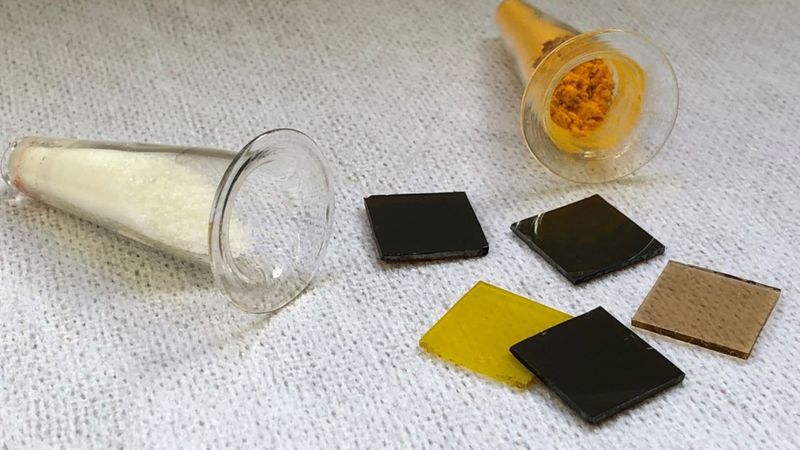Perovskite Solar Cells: Vacuum Process Can Lead to Market Readiness
Various production approaches in research and industry – comparative study explores paths to mass production

Perovskite photovoltaics promise high levels of efficiency. Researchers from KIT and partners have now analyzed different production approaches. (Photo: Tobias Zieher)
This article was first published on
www.kit.eduResearch and industry worldwide are working on the commercialization of perovskite photovoltaics. Most research laboratories focus on solvent-based manufacturing processes because they are versatile and easy to use. However, established photovoltaic companies today rely almost exclusively on vacuum processes to deposit high-quality thin films. An international consortium led by the Karlsruhe Institute of Technology (KIT) and the US Department of Energy's National Renewable Energy Laboratory (NREL, USA) has analyzed this critical discrepancy between laboratory and industry. They emphasize: Industrially proven vacuum processes could, with certain improvements, contribute to the rapid commercialization of perovskite solar cells. The results appeared in Energy & Environmental Science (DOI: 10.1039/d3ee03273f ).
Perovskite-silicon tandem solar cells have undergone rapid development in the past ten years: Efficiencies of more than 33 percent have been achieved in research. This means they are already better than conventional silicon-based solar cells. However, it is still not ready for the market. One of the hurdles is the unresolved question of which process can best be used to produce perovskite solar cells as a mass product. Solvent-based manufacturing processes that are used in laboratories worldwide are contrasted with vapor phase deposition processes in vacuum, which are still standard today in the production of thin films in photovoltaics or in the production of organic light-emitting diodes (OLEDs).
In a current comparative study, an international consortium of academic and industrial partners led by NREL and KIT revealed major differences in the scientific approach to these production processes. Tenure-track professor Ulrich W. Paetzold from the Institute of Microstructure Technology and the Light Technology Institute of KIT explains: “98 percent of all scientific studies in 2022 were published on solvent-based processes. Vacuum-based processes that have proven themselves in industry for decades and could significantly advance the commercialization of solar cells are neglected.”
To explain: Solvent-based production uses inks in which organic and inorganic salts are dissolved in a solvent. These inks can then be deposited onto the surface of a substrate via various printing techniques. In contrast, vacuum-based manufacturing uses dry and solvent-free processes. The materials are sublimated in a vacuum with the addition of heat, i.e. transferred from the solid to the gaseous state and condensed on the substrate surface. In principle, it is also possible to combine both processes for the production of perovskite solar cells.
Laboratory efficiencies and throughput are not everything when it comes to mass production
In the study, the authors analyzed the advantages and disadvantages of both methods. The dominance of solvent-based production in research so far lies in its uncomplicated handling in laboratories, which is the reason for very good results in terms of efficiency under laboratory conditions and its low costs. In addition, there is the possible scalable roll-to-roll production, i.e. endless deposition between two rolls, similar to newspaper printing.
In comparison, the vacuum-based production process causes slightly higher investment costs and, based on the processes used in research, is currently still behind in terms of deposition speed, i.e. production throughput. However, the authors show a variety of possible solutions and estimate that it is competitive taking into account real parameters such as electricity costs, production yield, material, decommissioning or recycling costs. Above all, the good repeatability of the deposition, the simple process control, the availability of industrial process equipment and the easy scaling of the deposition from small solar cell areas in the laboratory to application-relevant product areas make the process highly interesting for commercialization. “Vacuum-based production performs better than its reputation,” says Tobias Abzieh. It is therefore not surprising that the authors, in a first-ever published overview of commercialization activities in perovskite technology, were already able to demonstrate a lively interest in vacuum-based processes for the production of perovskite solar cells on the part of industry - despite the discrepancy in this regard on the method mainly used in research.
In order for vacuum-based processes to fully exploit their scaling effects, the manufacturing method still needs to be further improved, according to the researchers. Among other things, further research must be carried out on the quality of the separation in order to further increase the efficiency. It is also important to significantly increase the speed of deposition. “Vacuum-based manufacturing processes are not only the industry’s first choice when it comes to bringing thin-film technologies to market maturity. Our analysis also shows that the processes are competitive with solvent-based approaches,” adds David More from NREL.
Original publication
Tobias Abzieh, David T. Moore, Marcel Roß, Steve Albrecht, Jared Silvia, Hairen Tan, Quentin Jeangros, Christophe Ballif, Maximilian T. Hoerantner, Beom-Soo Kim, Henk J. Bolink, Paul Pistor, Jan Christoph Goldschmidt, Yu -Hsien Chiang, Samuel D. Stranks, Juliane Borchert, Michael D. McGehee, Monica Morales-Masis, Jay B. Patel, Annalisa Bruno and Ulrich W. Paetzold: Vapor phase deposition of perovskite photovoltaics: short track to commercialization? Energy & Environmental Science, 2024. DOI: 10.1039/d3ee03273f